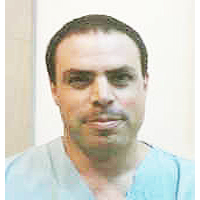First Metatarsal Stress Fracture of a pre-adolescent female Irish dancer with Medial Plantar Foot Pain: A Case Report
Published on: 17th July, 2017
OCLC Number/Unique Identifier: 7286423085
Background and Purpose: Injuries for the pre-adolescent female Irish Dancer (FID) are not well recognized. The purpose of this case study is to report imaging assisted diagnosis and management of atypical medial and plantar foot pain (MPFP) in an 8-year-old FID.
Description: The patient presented with chief complaint of diffuse left MPFP. The patient was initially evaluated by a Physical Therapist for persistent foot pain. The patient experienced minimal pain in non-weightbearing (NWB). Pain intensified in weightbearing (WB) escalating with a heel raise. The patient experienced pain with resistance testing, ankle passive range of motion (PROM) and first metatarsophalangeal joint (MTPJ) PROM. Diffuse tenderness with palpation over the medial column of the left foot was noted. The patient was unable to complete single leg dynamic activity on the left foot. There was suspicion for a metatarsal stress fracture (MSF). Radiographs were ordered and read as negative. The patient was treated with immobilization in a walking boot, WB as tolerated and relative rest including cessation of dance. The patient returned for re-evaluation 2 weeks after reporting no change in symptoms. Magnetic Resonance Imaging (MRI) was then ordered.
Outcome: Results of the MRI identified 2 stress fractures in the first metatarsal. The treatment plan changed to NWB status with immobilization for an additional 6 weeks. The patient returned to full WB status and participated in all dance activity 15 weeks after the initial presentation to the Physician and 27 weeks after the initial onset of MPFP.
Discussion/Conclusion: In this pre-adolescent FID, the presentation of MPFP can be misinterpreted as a soft tissue injury. It is important to consider the diagnosis of first MSF in a pre-adolescent FID to allow appropriate management.
Assessment of knowledge on breast self-examination among female adolescent: a cross-sectional study
Published on: 23rd March, 2022
OCLC Number/Unique Identifier: 9457394403
Background: Breast self-examination is the most important screening method for early detection and diagnosis of Breast cancer. Females assess their breasts regularly to detect any abnormalities to seek instant medical attention. Objectives: The main objective of the study was to assess the knowledge on breast self-examination among female adolescents of Nepal.Method: A cross-sectional study was conducted using self-structured questionnaires among female adolescents of Model Multiple College, Dhanusha. The sample size was 120 participants. Probability proportionate stratified sampling technique was used to collect the data from October 28th to November 12th, 2013. Data were processed through Statistical Package for Social Sciences version 16 and analyzed using descriptive statistics.Results: Out of 120 participants 67.5% participants had knowledge about breast cancer and 40% had knowledge of breast self-examination (BSE). Most of them (94.2%) had a poor knowledge of BSE followed by 5.8% of participants with a moderate level of knowledge of BSE. The mean knowledge score was 18.7 ± 3.5. The majority (66.7%) of participants were from science faculties. More than half (51.7%) of participants stated source of information on BSE was health personnel. Only 25% of the respondent had a family history of breast cancer. Conclusion: The study revealed that most (94.2%) of the participants had poor knowledge of breast self-examination. There is further need for awareness and health education on breast self-examination.
















